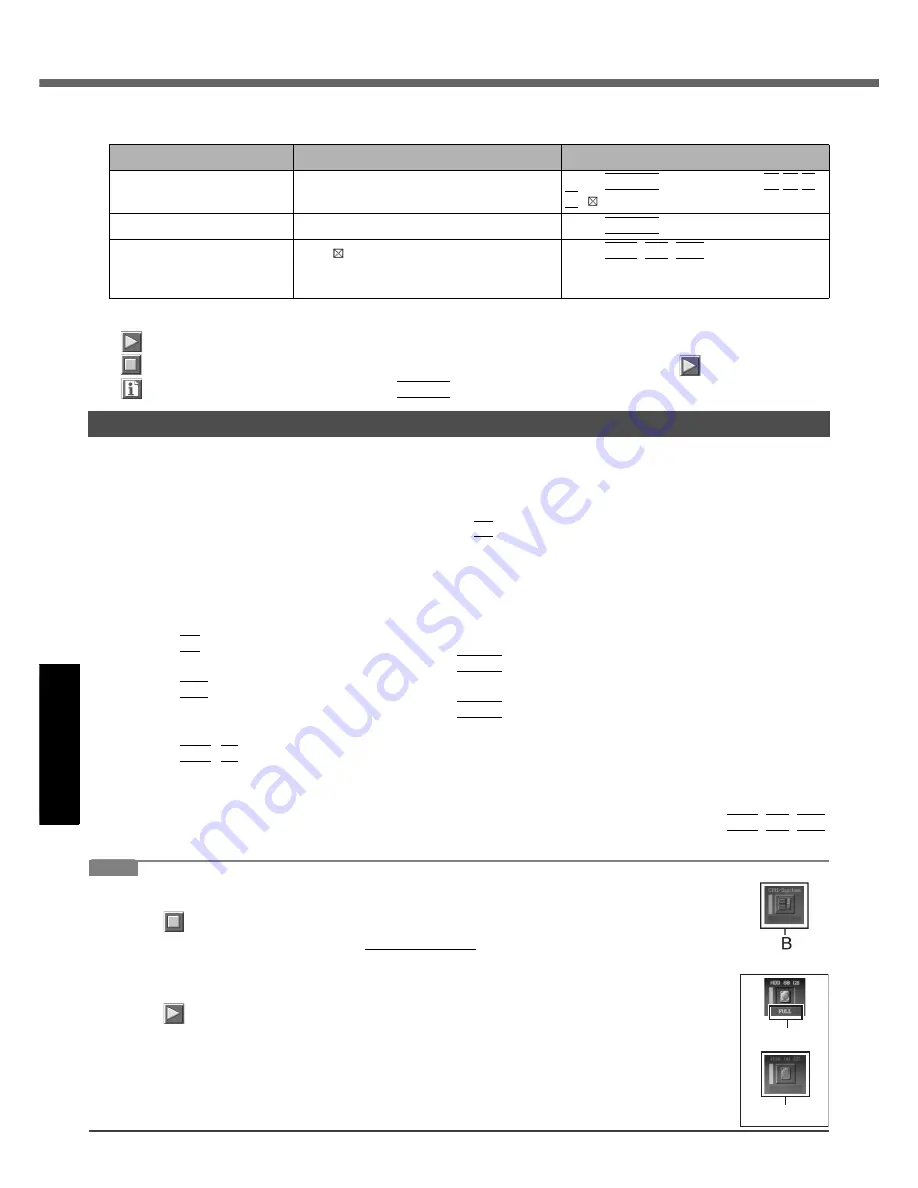
28
Hardware Diagnostics
Get
ting St
arted
U
seful In
formati
on
Troubleshooting
Appendix
We recommend that you use the touch pad for operations. When not using the touch pad, you can operate using the
internal keyboard instead.
By clicking the icon, you can execute the following operations:
•
: Start the diagnostic check from the beginning
•
: Stop the diagnostic check (You cannot restart the check partway through by clicking
)
•
: Display help (click the screen or press
Space
to return to the original diagnostic check screen)
Disconnect any peripheral devices (e.g., storage device) before running the diagnostic check.
1
Connect the AC adaptor and turn on the wireless switch. (
page 9)
During the diagnostic check, do not remove the AC adaptor, or attach any peripheral devices.
2
Turn on or restart the computer, and press
F2
for several times while [Panasonic] boot
screen is displayed.
The Setup Utility starts up.
If the password is requested, enter the Supervisor Password.
If you are using the computer after changing the settings from the status at the time of purchase, we recom-
mend that you make a note of the settings that are changed.
3
Press
F9
.
At the confirmation message, select [Yes] and press
Enter
.
4
Press
F10
.
At the confirmation message, select [Yes] and press
Enter
.
The computer will restart.
5
Press
Ctrl
+
F7
while [Panasonic] boot screen is displayed.
When the PC-Diagnostic Utility starts up, it will automatically begin the diagnostic check for all hardware components.
If the password is requested, enter the password.
The touch pad and the internal keyboard cannot be used until alternating blue and yellow colors are displayed on
the left side of the hardware icon (
page 27). If the touch pad does not operate properly, press
Ctrl
+
Alt
+
Del
to restart the computer, or press the power switch to turn the power off, and then restart the PC-Diagnostic Utility.
NOTE
NOTE
Using the following procedure, you can run a diagnostic check on a specified hardware component,
or run an extended diagnostic check on the memory or the hard disk.
A
Click
to stop the diagnostic check.
B
Click the icon for the hardware that is not to be checked, so that the icon is displayed in gray (B).
When running a check on the memory or the hard disk, clicking the icon once will turn on the
extended diagnostic check (“FULL” (C) will be displayed below the icon); click again, and the icon
will be displayed in gray (D).
C
Click
to start the diagnostic check.
Operations
Touch pad operations
Internal keyboard operations
Select icon
Place the cursor above the icon
Press
Space
, and then press
( (close) cannot be selected)
Click the icon
Tap or click (right click cannot be used)
Press
Space
above the icon
Complete the PC- Diagnos-
tics Utility and then restart
the computer
Click
(close)
Press
Ctrl
+
Alt
+
Del
.
Running the Diagnostic Check
D
C
e.g. hard disk



























